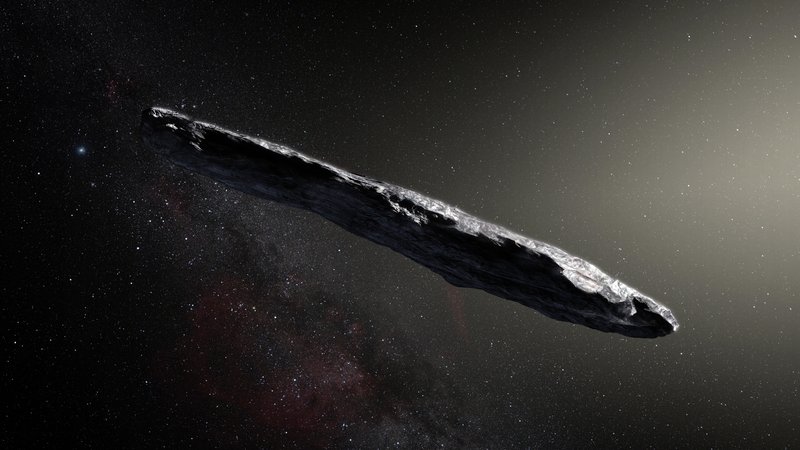
Bizarre Interstellar Asteroid Is Unlike Any Observed In Solar System.
A lost interstellar asteroid has entered the solar system after wandering between the stars for hundreds of millions of years, scientists believe.
The unique object, named Oumuamua, is highly elongated, about 400 metres long and coloured dark red.
It is the first space rock from outside the solar system ever observed by astronomers.
A telescope in Hawaii designed to spot Near-Earth Objects (NEOs) picked up the asteroid on October 19 as a faint point of light moving across the sky.
Further observations followed and orbital calculations showed beyond doubt that the object originated from outside the solar system.
Moving at 95,000 kilometres per hour, Oumuamua was at first thought to have travelled from the bright star Vega, 25 light years away in the northern constellation of Lyra.
But Vega was not even close to its present position 300,000 years ago, when its journey would have started.
That has led scientists to speculate that the asteroid is an interstellar wanderer that has stumbled across our solar system.
Astronomers estimate that interstellar asteroids pass through the inner solar system about once a year, but they are faint and hard to spot.
Oumuamua was discovered by the 1.8 metre Pan-STARR telescope in Hawaii, which is part of a system set up to track potentially threatening NEOs.
Other telescopes including the European Southern Observatory (ESO) Very Large Telescope in Chile were quickly deployed to study the object in more detail.
Speed was vital with Oumuamua fading rapidly as it headed away from the sun and back out of the solar system, the scientists reported in the journal Nature.
Dr Olivier Hainaut, from the ESO in Garching, Germany, said: “We are continuing to observe this unique object, and we hope to more accurately pin down where it came from and where it is going next on its tour of the galaxy.”













